- The Andean cat is an endangered and elusive wildcat species found in the high Andes Mountain regions of Argentina, Bolivia, Chile and Peru.
- The species is exceedingly rare across its entire range and researchers must endure high altitudes, reduced oxygen levels and adverse weather conditions to study and monitor widely scattered populations.
- Climate change and our attempts to curb it both put this small cat at risk. As the world warms, the Andean cat’s cold mountain habitat shrinks ever smaller. Global warming is also driving up demand for lithium and other rare metals for electric vehicles, with extractive industries pushing ever deeper into alpine zones.
- With low numbers and low density, addressing local threats is vital to protecting felid populations, making every single Andean cat important for species survival, researchers say. Innovative local community programs have contributed to conserving this small Latin American cat.
Many conservationists dedicated to protecting the endangered Andean cat have never seen one in the wild, with the species known to science by just a few photos until the late 1990s. And it took Juan Reppucci, leader of the Andean Cat Alliance’s In the Field 24/7 program, nine years to spot one of these elusive cats in its natural habitat.
The Andean cat (Leopardus jacobita) is one of South America’s most endangered small cat species, roaming the high Andes of Argentina, Bolivia, Chile and Peru. About the size of a domestic cat, it resembles a miniature snow leopard. Thick fur and an elongated tail make it well adapted to the harsh alpine environment it calls home and for chasing its favorite prey — vizcacha, a rabbit-resembling rodent — across rocky landscapes.
Reppucci’s sighting happened on a very “weird” day, he recalls. While out looking for a radio collar that had fallen from a Pampas cat (L. colocolo) in Jujuy province, Argentina, the researcher’s dog Monty (an ever-present companion and guide on field trips) got spooked by a herd of llamas and went missing.
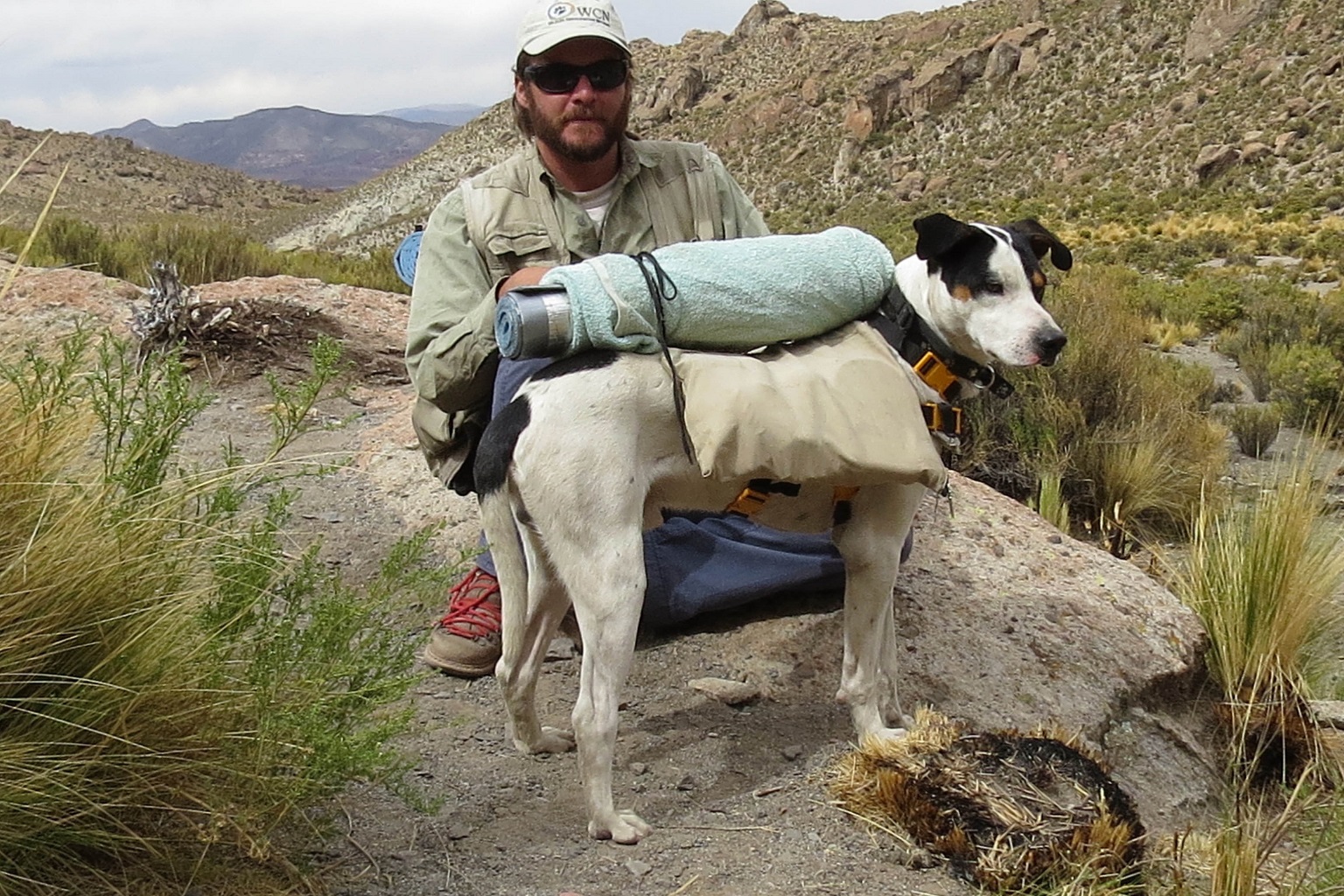
Reppucci walked for hours searching for both the collar and Monty. Eventually he reached a cliff edge and paused to catch his breath. “I was super tired, because I was super high” in the alpine zone.
As he gathered strength, out walked a female Andean cat from the foot of the cliff where he had been resting. “It was an amazing experience,” he remembers. “I saw the cat for like 40 minutes chasing vizcacha, just walking around, and she never saw me.” Monty, meanwhile, had made his way back to town. A very rewarding “weird” day all around!
Meet the Andean cat
The high mountain setting over which this cat roves makes it an incredibly challenging species to monitor and study.
The Andean Cat Alliance (Alianza Gato Andino in Spanish) field teams — mostly composed of AGA volunteers — spend a few weeks each year during spells of good weather setting up camera traps and searching for traces of the Andean cat. Their efforts occur at high altitudes up to 4,500 meters (14,763 feet) above sea level, where they battle strong winds, reduced oxygen levels, intense solar radiation and plunges in temperatures that can cause camera traps to fail or batteries to quickly go dead.
Andean cats boast one of the largest home ranges among small cat species, hunting across an area as large as 60 square kilometers (just over 23 square miles). They generally inhabit territory above 3,000 m (9,842 ft), though a population in the Patagonian Steppe lives at only around 650 m (2,100 ft).
“Most of the sites are remote,” notes Reppucci, with highly variable weather. “It can be very warm during the day, maybe 30° Celsius [86° Fahrenheit], and it can be well below zero [°C or 32°F], maybe 20° below zero [C or -4°F], during the night. So, it’s freezing.”
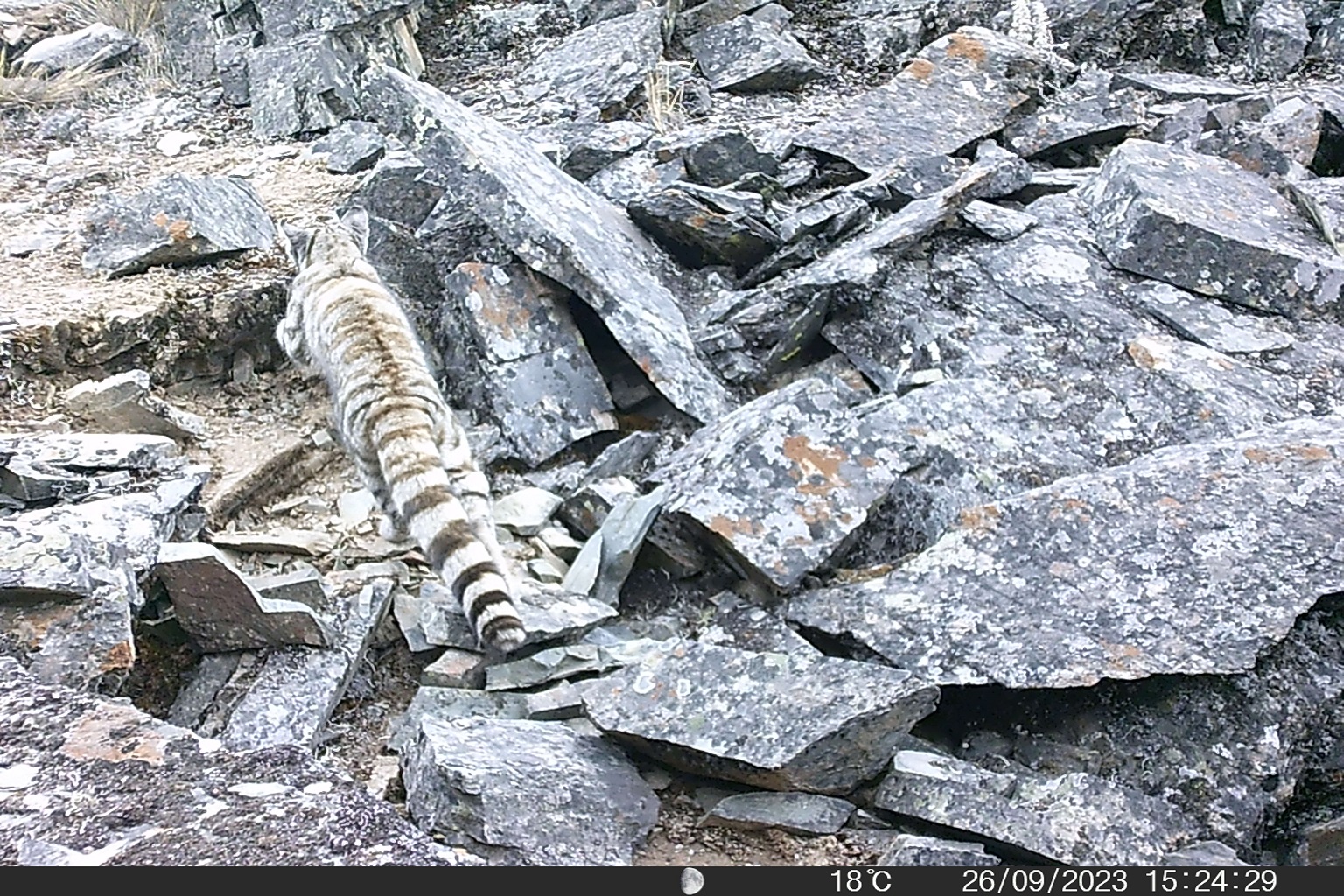
The Andean cat’s density is low and populations fragmented across its range. The latest estimate from 2024 suggests there are just slightly more than 2,000 mature individuals spread across a vast high-altitude landscape, though that could be an overestimation. Unlike many other wildcat species, Andean cats give birth to only one kitten at a time, giving them a very low, slow replacement rate.
AGA’s In the Field 24/7 program tries to conduct at least one survey annually in each of the Andean cat’s range countries. “In addition to the regular surveys … we are starting a new monitoring program in focal sites in all countries, alternating the location yearly,” Reppucci adds. “Which means that every site will be evaluated every four years.”
The frequency at which these activities occur often comes down to funding, which is tight for most small cat species. The Andean cat is no exception, with budgets varying from nation to nation. In Argentina, for example, more surveys are conducted, thanks to support from the country’s National Scientific and Technical Research Council.
Reppucci notes that the Andean cat’s remote habitat and its being “super difficult to spot” makes it challenging to garner support from donors who likely won’t ever see the animal, while other prospective funders can’t visit high-altitude regions due to pre-existing health conditions.
“We have spots that we know that the cats are very often crossing through,” he says. But there are other locales where it takes a year of camera trap monitoring to spot even a trace of a cat.
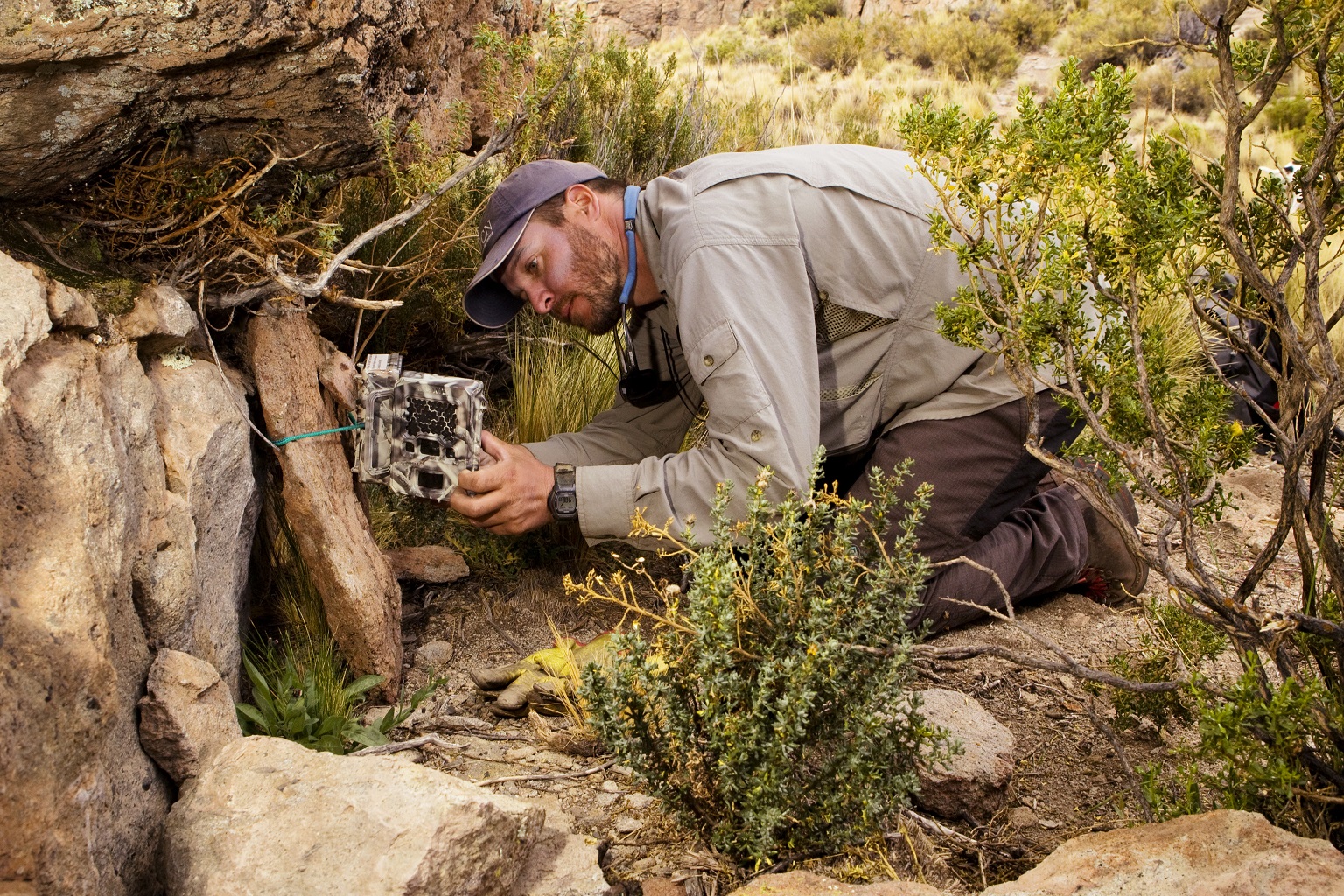
A multitude of threats
In 2024, researchers, led by Reppucci, updated the Andean cat’s IUCN Red List assessment. Its status didn’t change; it remains endangered. The threats facing it haven’t necessarily changed either, Reppucci says, but they have intensified.
Climate change is a growing danger, as the Andes change rapidly, with temperatures climbing and glaciers melting faster than in other regions of the world.
For the Andean cat, that means its habitat is ever moving uphill, along with that of its prey. As these cold-clime animals retreat ever higher, their mountain range habitat shrinks — like a disappearing ocean archipelago with islands drowned by rising seas. “The whole [habitat] area that will be available will be reduced. And it’s already reduced and is very patchy because they are specialists of rocky places,” Reppucci says.
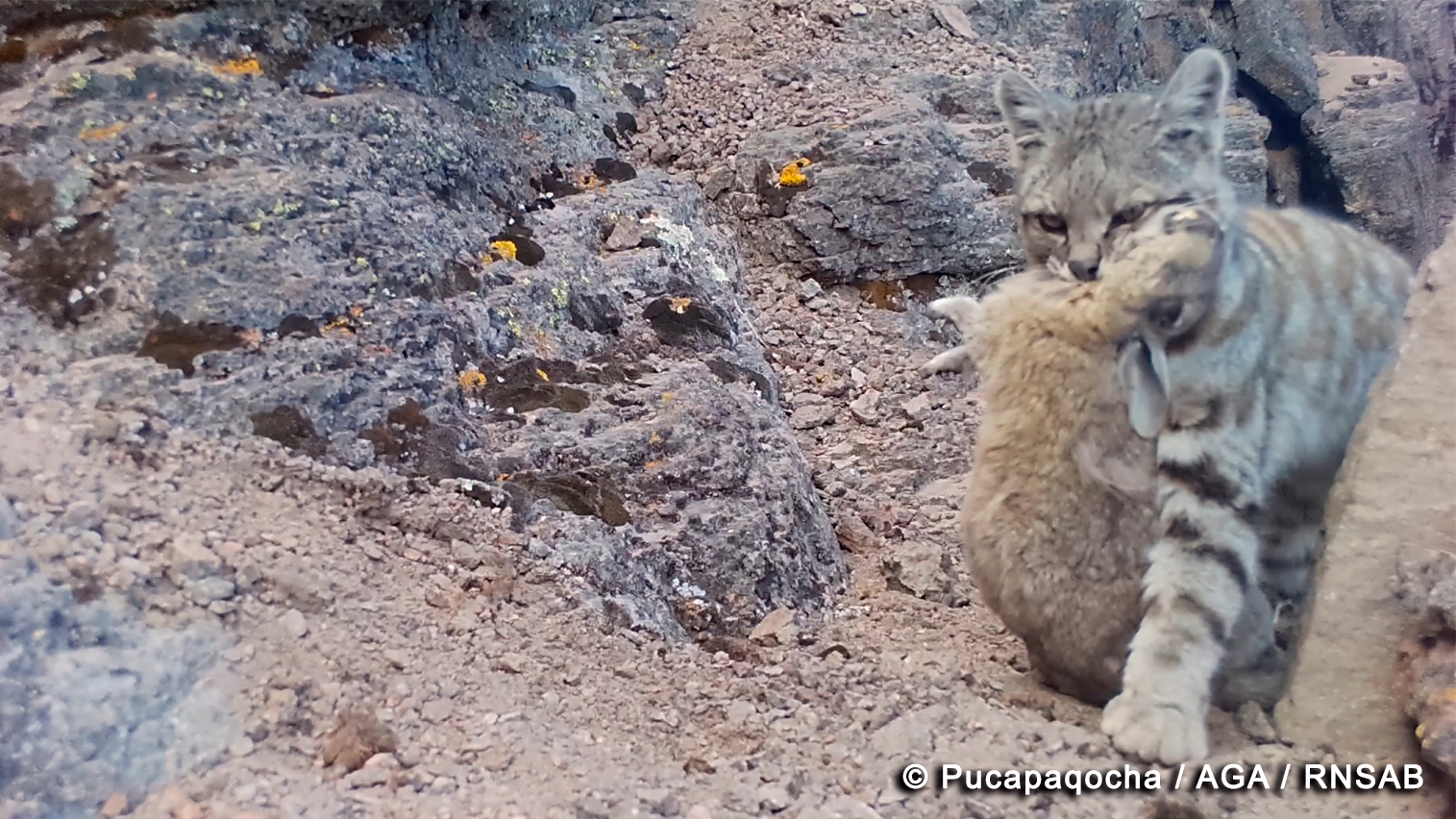
Ironically, efforts to combat climate change are also implicated among Andean cat threats, with intensifying demand for rare metals and minerals needed for the global energy transition bringing resource exploitation deep into the small cat’s alpine home.
“While mining is already widely distributed on the Andean Cat’s known [range] and is affecting the species both directly and indirectly, most of nearby unexploited areas are affected by requests or permits for mining exploration and exploitation,” the 2024 IUCN assessment states.
A major mining threat, Reppucci says, is underway inside the so-called “lithium triangle” of Argentina, Bolivia and Chile. Demand for lithium is soaring globally, driven by the need for batteries installed in electric vehicles and electronics.
Though the Andean cat doesn’t inhabit or use the salt flats where lithium is found, experts say the ripple effects of mining activities may ultimately harm populations. That’s particularly true because the core of the species’ distribution — where densities are highest — lies within the lithium triangle.
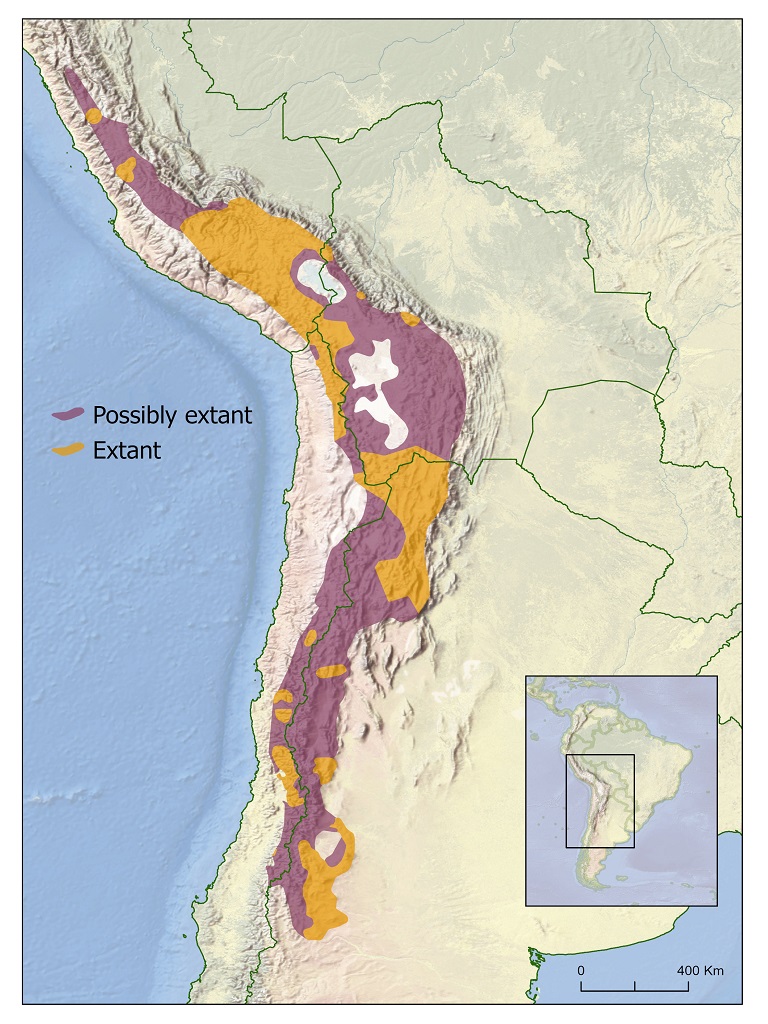
“Even though the salt flats from which lithium is sourced are not habitat for the Andean cat, the footprint of these activities is large,” Reppucci says. “It’s not prime area for cats, but it’s prime area for many species that the cats might feed on.”
Other metals such as copper and gold occur across L. jacobita’s range. In Patagonia, a fracking boom for shale oil and natural gas poses a similar threat.
Mining often uses vast volumes of water, potentially depleting or contaminating vital natural sources. It also brings an influx of people to mountain areas. And with people come dogs, cars and roads, which spell danger for Andean cats. Domestic and feral dogs pose an immediate disease threat, while the small cats could also end up as roadkill.
AGA member Mauro Lucherini, a researcher at the National University of the South in Argentina, offers an example of how mining disrupts animal populations. One of his previous study sites in Argentina once supported high numbers of very visible vicuña running about. Then a copper mine opened nearby, and roads were carved through the area. Today, the animals are scarcely seen there.
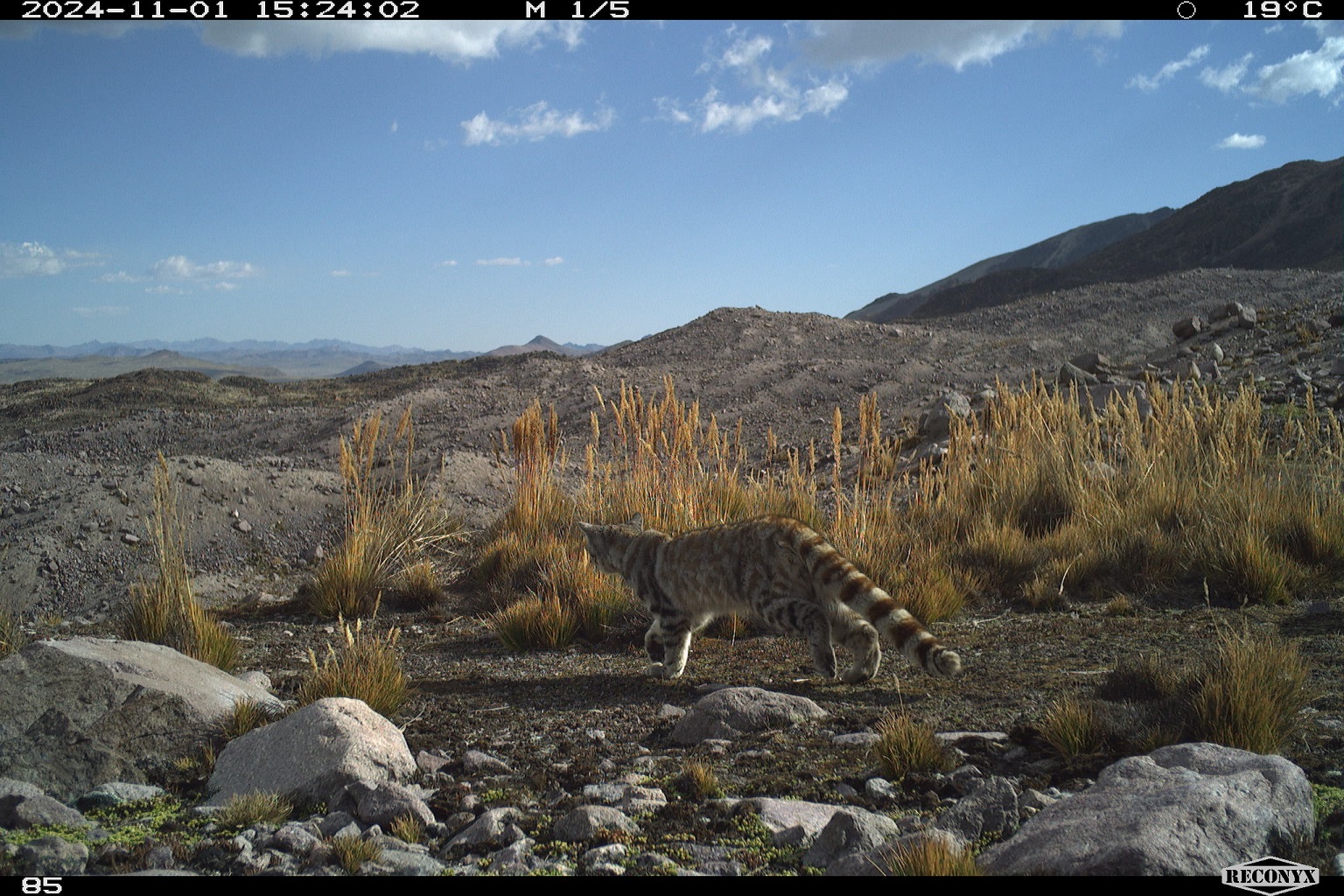
“All the infrastructure they are building, the exploration, the movement of vehicles — everything can cause changes and modifications to the habitat that can strongly affect the Andean cat and other species,” Lucherini says. “These things have become probably more important in our list of threats than the more traditional threats … associated with local communities.”
Rounding out the small cat’s problems, hunting remains an issue in some places. Hunting can be targeted, but also indiscriminate when farmers kill Andean cats and other carnivores in retaliation for livestock predation, even though this small cat likely isn’t the culprit.
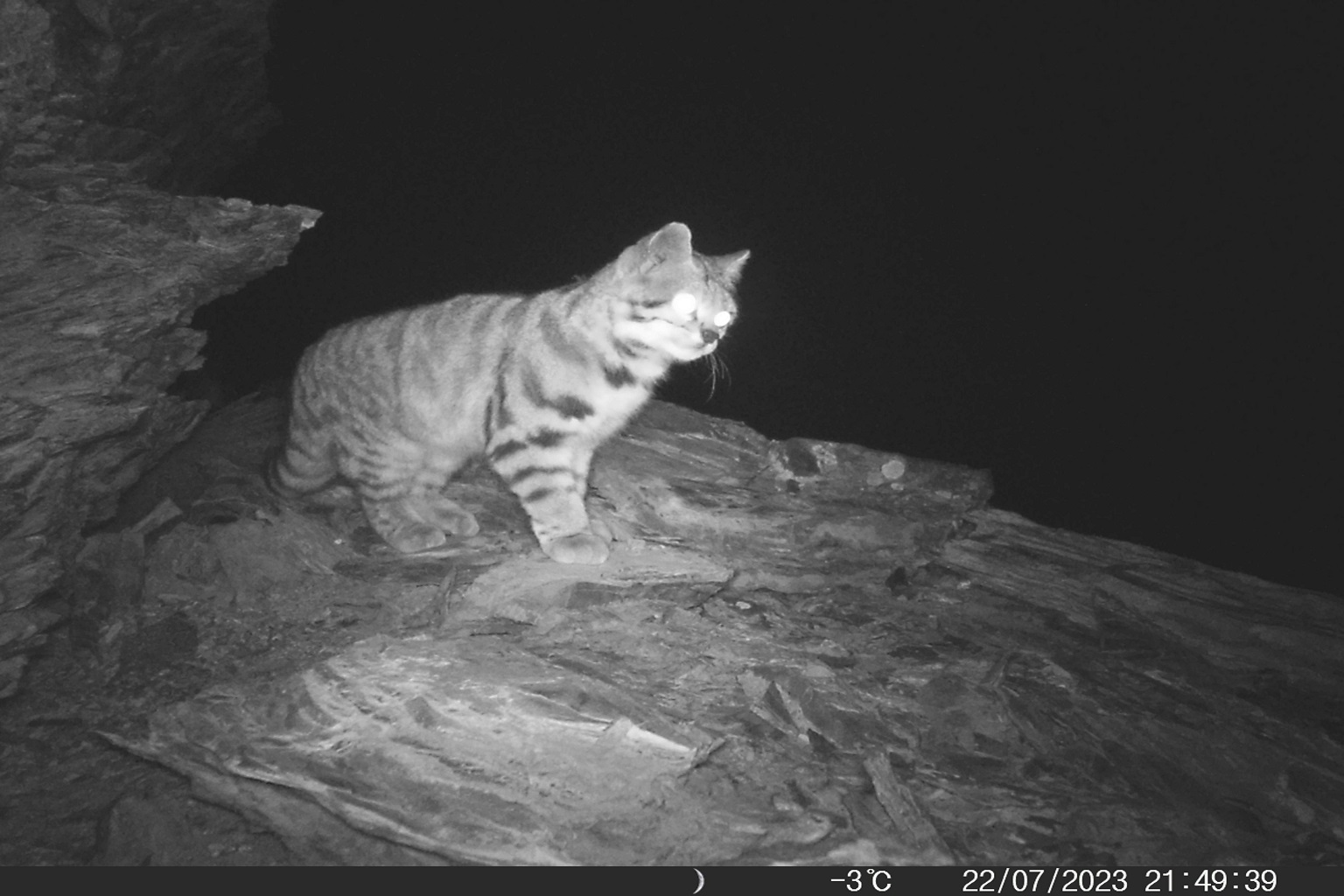
A troubling genetic picture
When Reppucci and colleagues go into the field, scaling peaks and often spending weeks at high altitude, they set camera traps but also scour the land for Andean cat feces to obtain DNA samples. That’s no easy task as, unsurprisingly, the cat’s rarity means its poo is in scarce supply.
“Andean cats are 7-10 times less abundant than the Pampas cat,” Reppucci says. If you have a good eye, you can maybe collect around 50 feces in a day in some places, whereas other sites may leave you emptyhanded after a week of searching.
Packaged up poop is sent for DNA analysis to the lab of Constanza Napolitano, who heads up the genetics unit of AGA’s In the Field 24/7 program. This team has also sourced DNA from wildcats killed by cars and felid pelts held by local communities.
Crucial details have emerged from this work. A 2023 study found that the Andean cat has low genetic and genomic diversity, the lowest among the Leopardus genus (which includes at least eight species). The Andean cat has 10 times less diversity than the ocelot, for example.
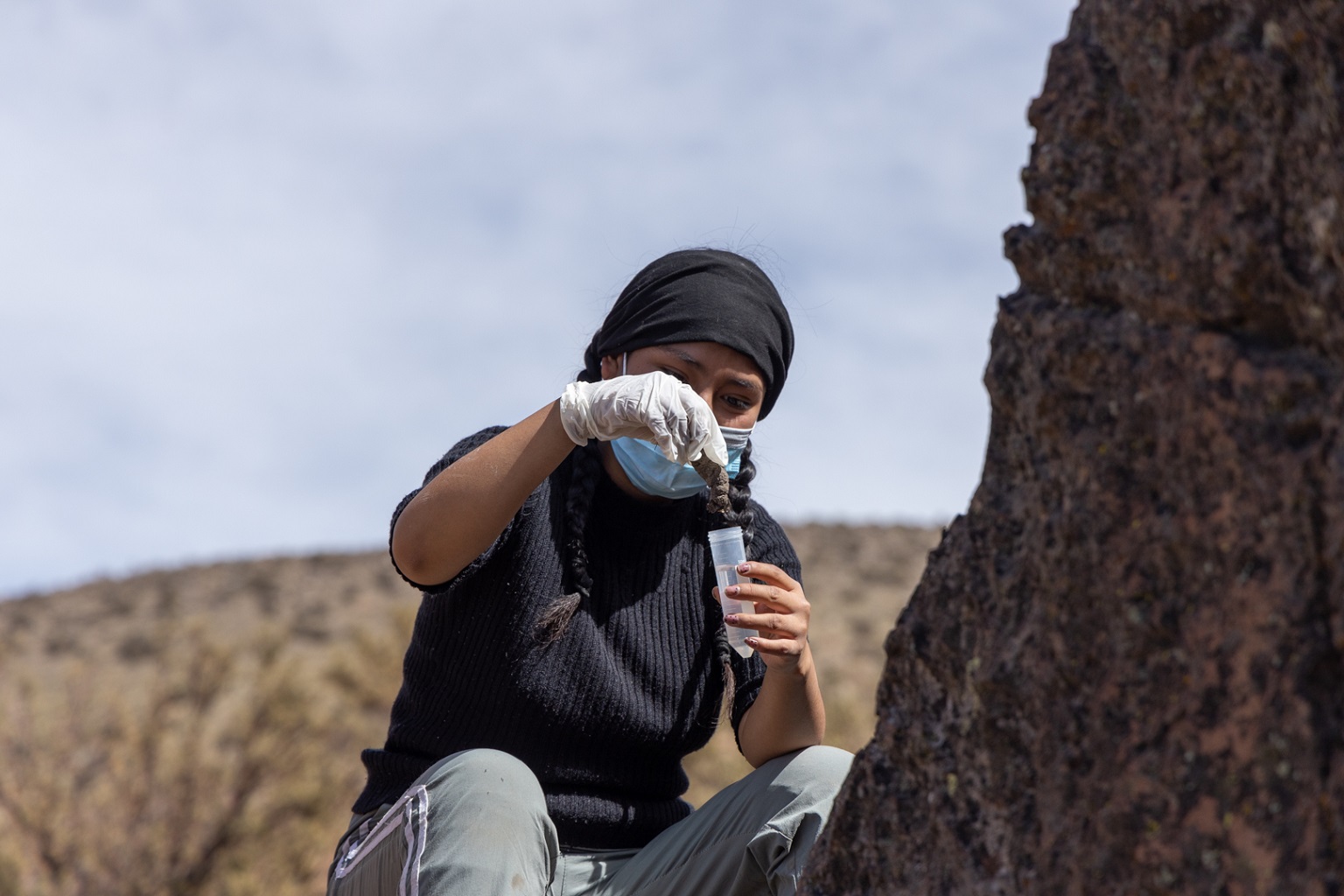
Those findings align with the scarce camera trap images. “It points towards the same direction, basically, that the populations are very small,” says Constanza, who is also an associate professor in the Department of Biological Sciences and Biodiversity at Los Lagos University, Chile.
The AGA lab’s primary objective is to create a genetic map of Andean cat populations to identify priority conservation units, she explains: “If there are populations that are isolated and not connected with others across the range, we can address that using genetic tools.”
“What we’re mostly interested in is assessing connectivity between the different areas we’re sampling,” she adds. “What we want to know is whether there are any populations that are small and isolated with no connectivity.” Once identified, these sites can be prioritized for conservation action, she adds, because small isolated populations pose higher risk of extinction.
She points to southernmost populations in Chile and Argentina as an example. Sampling efforts there could shed light on whether these two populations — present at similar latitudes on either side of the Andes — are connected or not.
Agustin Iriarte, director-general of Flora & Fauna Chile, an environmental consultancy, explains that camera trapping in the Puritama reserve of northern Chile indicates there are very few Andean cats there, possibly only 5-10. That’s despite the availability of prey and no hunting in an area that spans around 8,000 hectares (almost 20,000 acres, 23 times the size of New York’s Central Park).
One hypothesis for this low number, he says, is that these particular cats may now be unable to reproduce due to high levels of inbreeding. To prove that premise, they would need to catch a male cat, which hasn’t happened yet.
Protecting each cat
Preserving an elusive and widely dispersed wildcat is challenging, particularly with stretched financial resources, as is almost always the case with small, noncharismatic felids. One low-budget conservation strategy embraced by Andean cat advocates is to focus on addressing localized threats by working very closely with communities.
One such activity run by the Andean Cat Alliance is CATCrafts, which trains local people to create handcrafts — usually cat-inspired — from leftover materials.
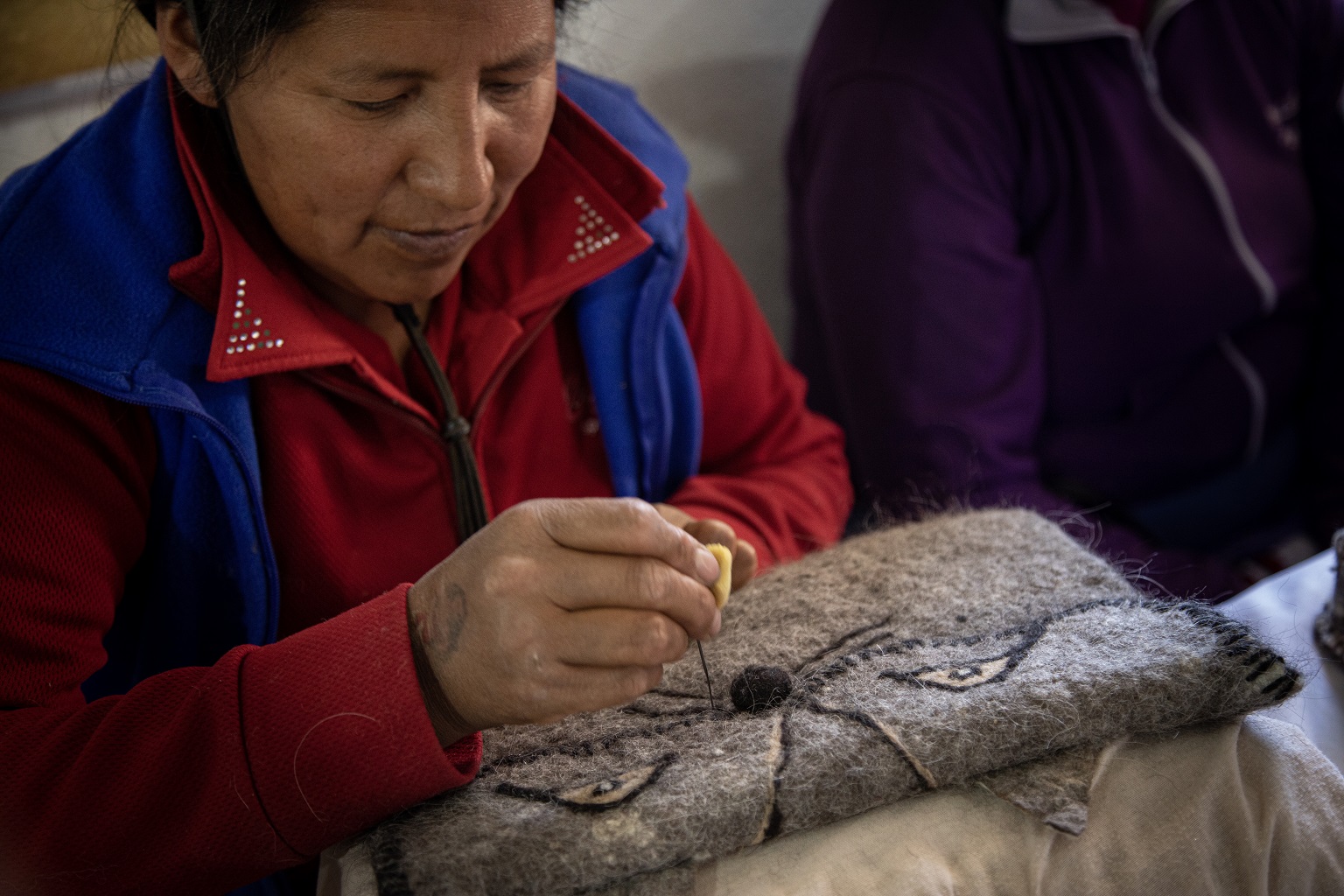
“We feel that by enabling local communities to find alternative, sustainable ways of life and activities, we are also helping achieve a healthier ecosystem,” says Lucherini, who heads up CATCrafts. “The artisans themselves, which are almost 95% women, start acting like ambassadors of Andean cat conservation when they talk to other people within their community.”
Lucherini notes that while conservation progress is slow, hope remains strong that by working with communities and empowering them, it will become harder for mining companies to gain a local foothold. In 2024, CATCrafts’ income-generating activities garnered $7,400 for families across five communities in Peru, Argentina and Chile.
Other activities address the potential disease threat posed by free-roaming dogs by offering vaccinations and neutering.
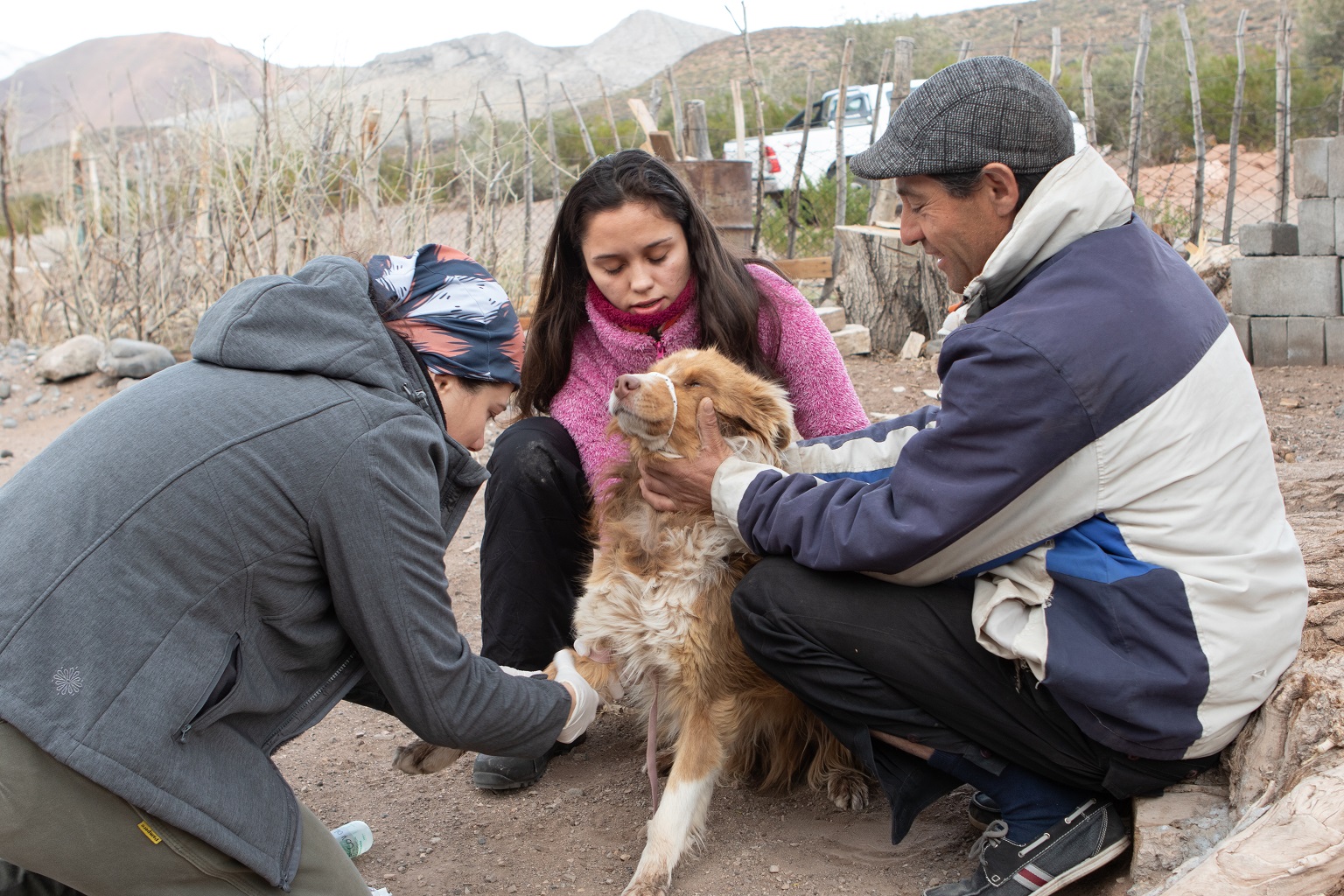
When it comes down to it, saving a single cat can be vitally important, Reppucci says. “The [Andean cat] density is so low that if you kill one, you might lose the connection between two populations.”
Other threats — namely climate change and resource extraction — loom large and require far different, expansive approaches. Implementing circular economy principles globally (at its simplest involving reducing, reusing and recycling materials) could help reduce the need for resource extraction, Reppucci says, which in turn could help the Andean cat cling to survival on its rocky ledges.
“It’s the same with climate change,” he adds. “Every kitten, every cat counts. Anything we can do for climate change, and anything we can do to help protect the Andean cat, is important for the species.”
Banner image: The Andean cat is a rare and endangered species highly specialized to life in the high Andes. It’s estimated that around 2,000 mature individuals, living in fragmented populations, are spread very thinly over a vast alpine expanse in Argentina, Bolivia, Chile and Peru. Image courtesy of Juan Reppucci.
Citations:
Reppucci, J., Lagos, N., Palacios, R., Lucherini, M., Tellaeche, C., Villalba, L., Napolitano, C. & Pino-Charaja, A. (2024). Leopardus jacobita. The IUCN Red List of Threatened Species e.T15452A261786289. https://dx.doi.org/10.2305/IUCN.UK.2024-2.RLTS.T15452A261786289.en.
Walker, S., Funes, M., Heidel, L., Palacios, R., & Novaro, A. (2013). The endangered Andean cat and fracking in Patagonia. Oryx, 48(1), 14-15. doi:10.1017/s0030605313001440
Lescroart, J., Bonilla-Sánchez, A., Napolitano, C., Buitrago-Torres, D. L., Ramírez-Chaves, H. E., Pulido-Santacruz, P., … Eizirik, E. (2023). Extensive Phylogenomic discordance and the complex evolutionary history of the neotropical cat genus Leopardus. Molecular Biology and Evolution, 40(12). doi:10.1093/molbev/msad255
FEEDBACK: Use this form to send a message to the author of this post. If you want to post a public comment, you can do that at the bottom of the page.
